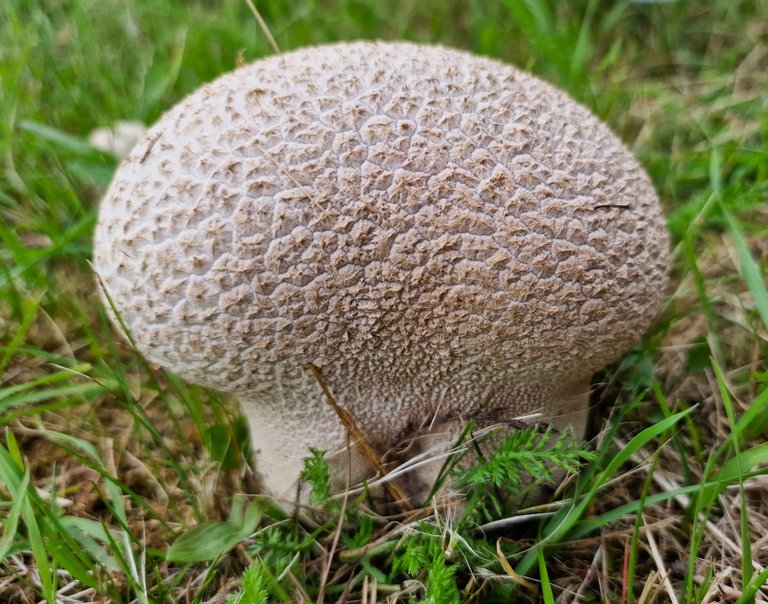this is my contribution to #FungiFriday by @ewkaw
though puffballs are among the most common fungi in these parts i have never posted about them, so it is about time to do so. especially because it is now high season for them and this is turning out to be a good year for them here in norway. i am presenting 3 species the first 2 are edible but the last is somewhat toxic so it is important to know what to pick and what to leave.
but first a general note about puffballs.if you have ever tried researching the lives of fungi you have undoubtably come across a new foreign vocabulary. their anatomy is nothing like ours with hands, knees, kidneys, tonsils etc. no they have totally different structures that vary among the different species. puffballs have gasterothecium which in plain english is called a gasteroid basidiocarp🤪. what that means is they have an internal structure where spores are produced. unlike most mushrooms the spores are not released until the puffball ages, dries out and cracks.
in the species of puffballs that are edible, they are only edible when they are young and this spore producing structure has not been developed. when young the entire inside of the puffball is white. as the puffball matures the darker spores become clearly visible, soon dark brown to black in the center while the outer flesh remains white for a while. by the time the puffball dries out, which may be weeks or months it is completely full of spores so when pressed or stepped on a puff of spores emerges like smoke. in my childhood we used to stamp on them multiple times to release all the 'smoke', unknowing that this is exactly what the puffball is designed for. so while you might want to discourage your kids from going around and stomping on mushrooms in general, you can make an exception for dry puffballs.

Lycoperdon utriforme or Handkea utriformis ( two alternative names for the same species) mosaic puffball is relatively large and conspicuous species that is edible when young. the flesh must be pure white to be edible. it is not among the most sought after delicious fungi but it is a good find partly because of it's size. it is recognizable by the mosaic like design on the surface. though this specimen is oval in shape it is more common to find them as round as a ball.

of particular interest for the mosaic puffball is its antibiotic properties, including E. coli, Staphylococcus, and Streptococcus which are pathogens

Lycoperdon excipuliforme pestle puffball is also edible when young and white with warts. these two are no longer edible but not ready to release their spores in a purple puff

the pestle puffball has clearly visible stems while the top section is round as a ball, in this case a somewhat deflated ball. the stems first wrinkle but they don't disintegrate after the spores are released. they turn leathery and sometimes last until the year after.

Scleroderma citrinum, common earthball is as the name reveals quite common. it is yellow to brown it should immediately be obvious that this is not edible. it is mildly toxic. it is not spongy but hard and the inside is almost totally black. it is not actually a puffball but a close relative.

Armillaria gallica or Armillaria lutea, bulbous honey fungus when young and viewed from above can resemble a group of puffballs growing tightly together but on closer examination the stipe and gills are easily distinguishable. some consider this edible but some consider it questionable so it is not one we pick.
The fungus received international attention in the early 1990s when an individual colony living in a Michigan forest was reported to cover an area of 15 hectares (37 acres), weigh at least 9.5 tonnes (9,500 kg; 21,000 lb), and be 1,500 years old. This individual is popularly known as the "humongous fungus", and is a tourist attraction and inspiration for an annual mushroom-themed festival in Crystal Falls. Recent studies have revised the fungus's age to 2,500 years and its size to about 400 tonnes (400,000 kg; 880,000 lb), four times the original estimate.[1]
source: https://en.wikipedia.org/wiki/Armillaria_gallica
also wikipedia has been used as a source for each of the other species


